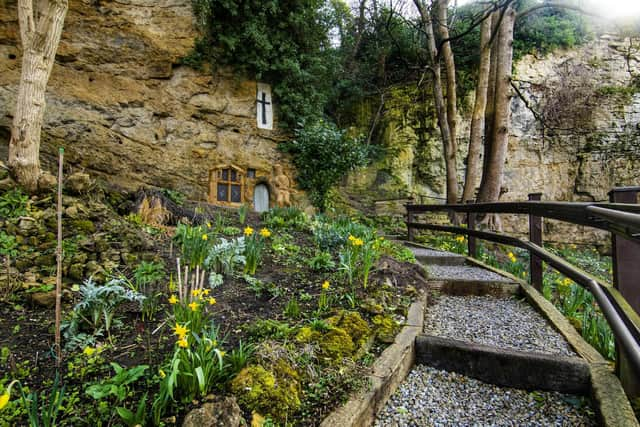The story behind the tiny Knaresborough chapel carved into a rock face and the lady of the crag
The Chapel of Our Lady of the Crag, as it is known, is carved into the cliff face and is dedicated to both the Virgin Mary and Jesus Christ.
The group of volunteers that has cared for it over the past two decades is now a trust and opens the chapel to visitors and pilgrims, as well as raising funds for the maintenance of the site.
Advertisement
Hide AdAdvertisement
Hide AdThe Marian shrine dates back to the early 15th century, built by a man known as ‘John the Mason’ in 1408, after permission was granted by King Henry IV.


He was given a licence to excavate in order to create the chapel.
The Chapel of Our Lady of the Crag Trust recounts the site’s history on its website, telling a story that attributes its conception to a “divine miracle, a tale that has become part of the shrine’s fascinating folklore.
“John’s young son had accompanied his father to the quarry,” the trust writes of the story. “As he played there a rock fall started without warning and John’s son was right in its path.
Advertisement
Hide AdAdvertisement
Hide Ad“John was too far away to snatch his son to safety, but he cried out a prayer to Mary to protect the boy. Miraculously the rock fall changed course and the lad was unharmed. It was in thanksgiving for this that John founded the chapel.”
However, other reasons may prompted him to have hewn the chapel out of the rock too, not least as a way of displaying his impressive skills as a master craftsman.
It may also have been built as a wayside shrine for pilgrims, who were making their way to a priory that once sat in the North Yorkshire town.
In 1952, the chapel became Grade 1 Listed, meaning it is a building of exceptional interest.
Advertisement
Hide AdAdvertisement
Hide AdDetail of what it contained in its early years is scarce and the origins of carved heads inside the chapel are not known either.
Yet, such mysteries only add to its striking nature and intrigue.
Support The Yorkshire Post and become a subscriber today. Your subscription will help us to continue to bring quality news to the people of Yorkshire. In return, you'll see fewer ads on site, get free access to our app and receive exclusive members-only offers. Click here to subscribe.
